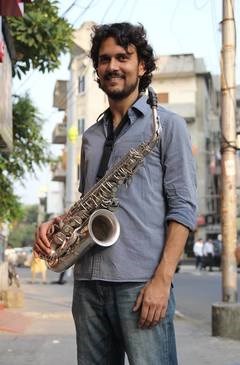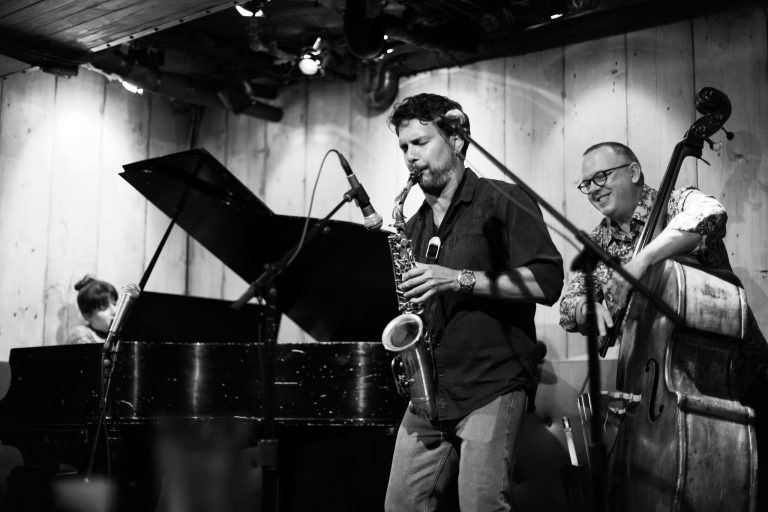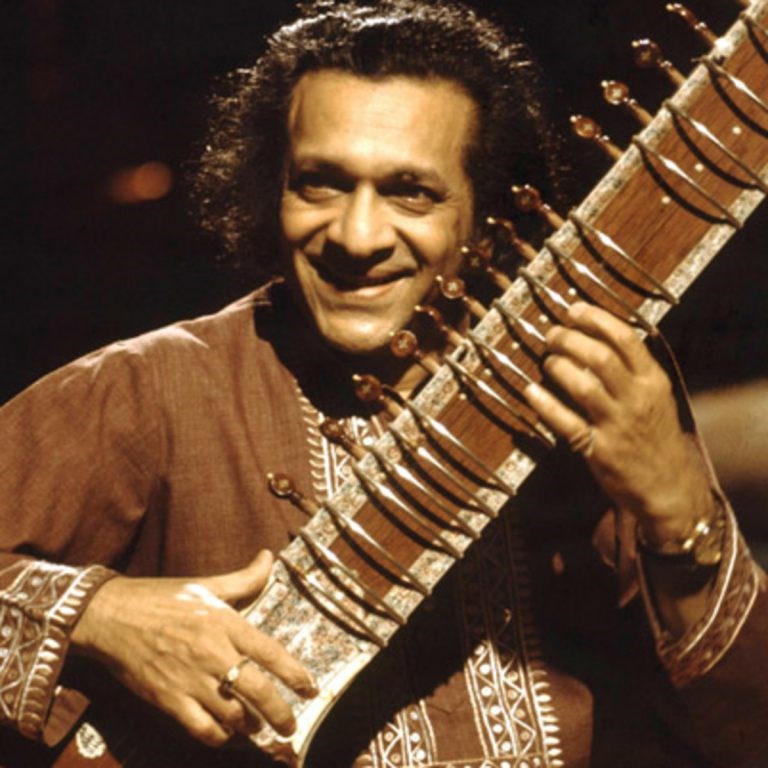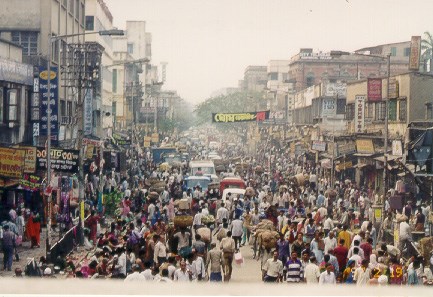Mittal's music is not a fusion of jazz and Indian classical music. It is a confluence of sounds, as he shares in a personal conversation.
"The Art of Seeing" by Michael Milton

I am standing at the corner of Ocean and Parkside Avenue in Brooklyn. It is late morning and my mind is beginning to clear after a second espresso. The sun is struggling to break through a thin blanket of clouds. I stop to orient myself to my surroundings, having just emerged from a trip from Manhattan underground.
I tune into the music of the neighborhood; at first, just a jumble of sounds without cohesiveness; the flow of traffic on a one-way street, a snippet of some passerby's one-way conversation on their cell phone, brakes screeching, a subway rumble, a distant siren. The traffic signal clicks red and vehicles forming the "melody" of these random sounds stop, a rest of sorts on the universe's page of life's music. Other sounds continue during the rest, a whole slew of jazzy percussive accents become more predominant; a baby cries from a nearby stroller; a woman rushes past me and mutters something unintelligible to herself; the rapid click-clack of high heels on the sidewalk.
Then the signal turns green. Cars gear up and as traffic moves forward again, the main "melody," as it were, is reinserted, the theme against which all the other audible bits and pieces find their lesser but still vital places on the page. I surprise myself; I am moved by the rustle and bustle of this neighborhood. There is no composer's intention to touch my heart by this random cacophony, yet I am touched; life pulses and I take a moment to hear it and to acknowledge it.

I am soon to discover that this random listening is a good warmup for the interview I'm having today. I am here to visit American composer Aakash Mittal, who is currently residing near Parkside Ave. in Prospect Leffert Gardens. Mittal hails originally from Dallas.
"My father was born and raised in India, my mother—an incredible visual artist—is from Nebraska. I'm part of two worlds."
His music grabbed my attention immediately when I started listening a few days before. What I've ingested thus far has struck me as an amalgamation of jazz flavored with a texture redolent of India.
"Much of my music is influenced by my experiences with Hindustani music in India and the sonic environment of Kolkata, specifically. My aunt and uncle, who live in Chicago, were friends with sitar player and composer Ravi Shankar. When I expressed an interest in studying Hindustani music they connected me to Ravi Shankar's tabla player, Tamoy Bose. Tanmoy hosted me on my first music study trip to Kolkata and introduced me to my teacher Prattush Banerjee. My guru, actually."

Aakash explains that in India, music is a tradition passed on from teacher to student. "There are different raga forms: Hindustani music is associated with North India and Carnatic is associated with Southern India. Very little is written down. It is an oral tradition. You sit, you listen and you remember."
A raga is a pattern of musical phrases that have specific notes, characteristic intervals and embellishments. At the heart of raga music is improvisation, which is Aakash's primary interest. However, his journey with improvised music did not begin with India. Rather, it began with dance and the swing music revival of the '90s.
"It all starts with rhythm. Rhythm is part of everything we do, from our heartbeat to our social interactions."
Thirty-three-year-old Aakash says, "I was a big fan of the music of the '40s growing up. In fact, I was quite a dancer before I was a musician. I learned the Lindy Hop which really began my musical journey. I was listening to Benny Goodman, Count Basie and Big Bad Voodoo Daddy."
The dance element is not a surprise, either. Mittal sees a close relationship between music and motion. "It all starts with rhythm. Rhythm is part of everything we do, from our heartbeat to our social interactions. I remember one of my favorite artists, pianist Vijay Iyer telling me 'Rhythm is how we move through time.'"
Aakash started playing clarinet in elementary school and then moved on to saxophone in high school.
"I am interested in languages of improvised music. Early on, I was exposed to raga music and jazz because of the communities I inhabit. As an artist, I seek to step beyond representation, though. I want to create sounds that will construct their own reality. My music may cause emotion, but I don't write for an emotional response."
"As an artist, I seek to step beyond representation, though. I want to create sounds that will construct their own reality."
I ask what he found different about living in India.
"In India, the first question I was asked was rarely 'What do you do for a living?' In fact, sometimes it didn't come up at all. Conversation was more often about music, family, spirituality and politics. Living in India was an ecstatic experience. I moved there in 2013 with a fellowship from the American Institute of Indian Studies to work with my guru. I discovered so much humanity there, literally and figuratively. So many people, so many sounds; the city inspired me because the city itself is a wall of constant sound—a beautiful noise-scape, if you will. For me, it has a visceral quality to it. It seems to encompass the struggles and celebrations of life."
Mittal is also a big fan of philosopher Joseph Campbell.

"When I read his line about "finding your father" in The Power of Myth, I realized that in a way, I was searching for my father through my music. There were lots of things about my father I didn't understand when I was young. He was an immigrant from India and there were many things that he would say and do that didn't make sense to me as a kid in the context of America. But every time I visit India, I learn something new about him and I get a better understanding of who he was."
Towards the end of our conversation, I make the comment that Aakash's music strikes me as a fusion of jazz and Indian classical music. "I'm not sure that fusion is the word." After a moment, he adds, "Perhaps, better, a confluence of sounds."
I don't immediately understand the distinction. But on my way home I consider his point. Fusion is two or more objects or ideas welded together so that there exists a seam still distinguishing each disparate item. They are only joined along one place, the connection weak. On the other hand, imagine the place of confluence of two rivers: Water mixes together but one cannot see where the contribution of one river can be distinguished from the contribution of the other.
I believe confluence is truly our future. And, it is also a part of our past, regardless of forces that have wished it to not be so. It is these other forces that want to teach us that we were once and must always be separate. The future will always be a continuation of hybridity, a process which is innate to the human spirit, a process impossible to halt.



